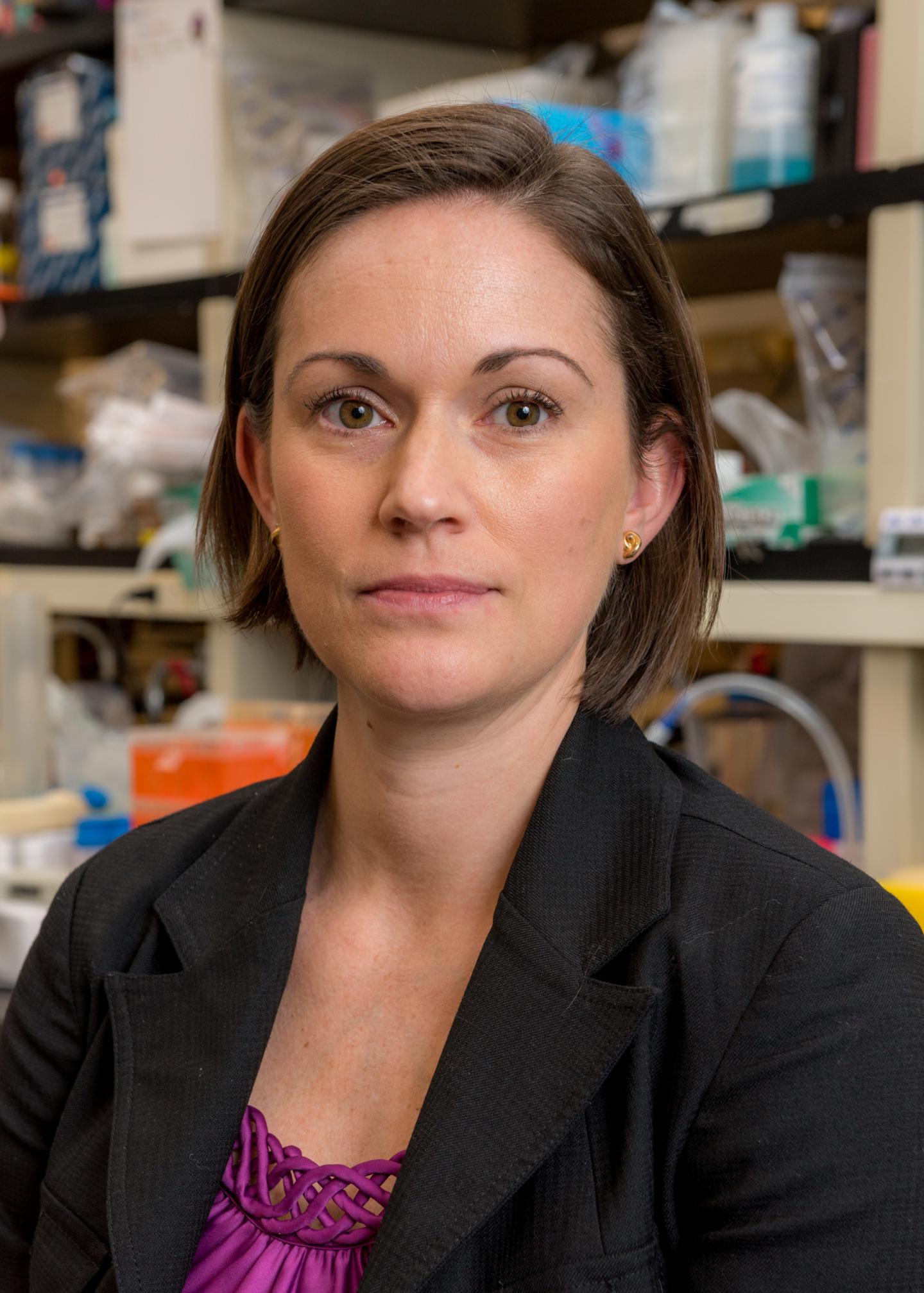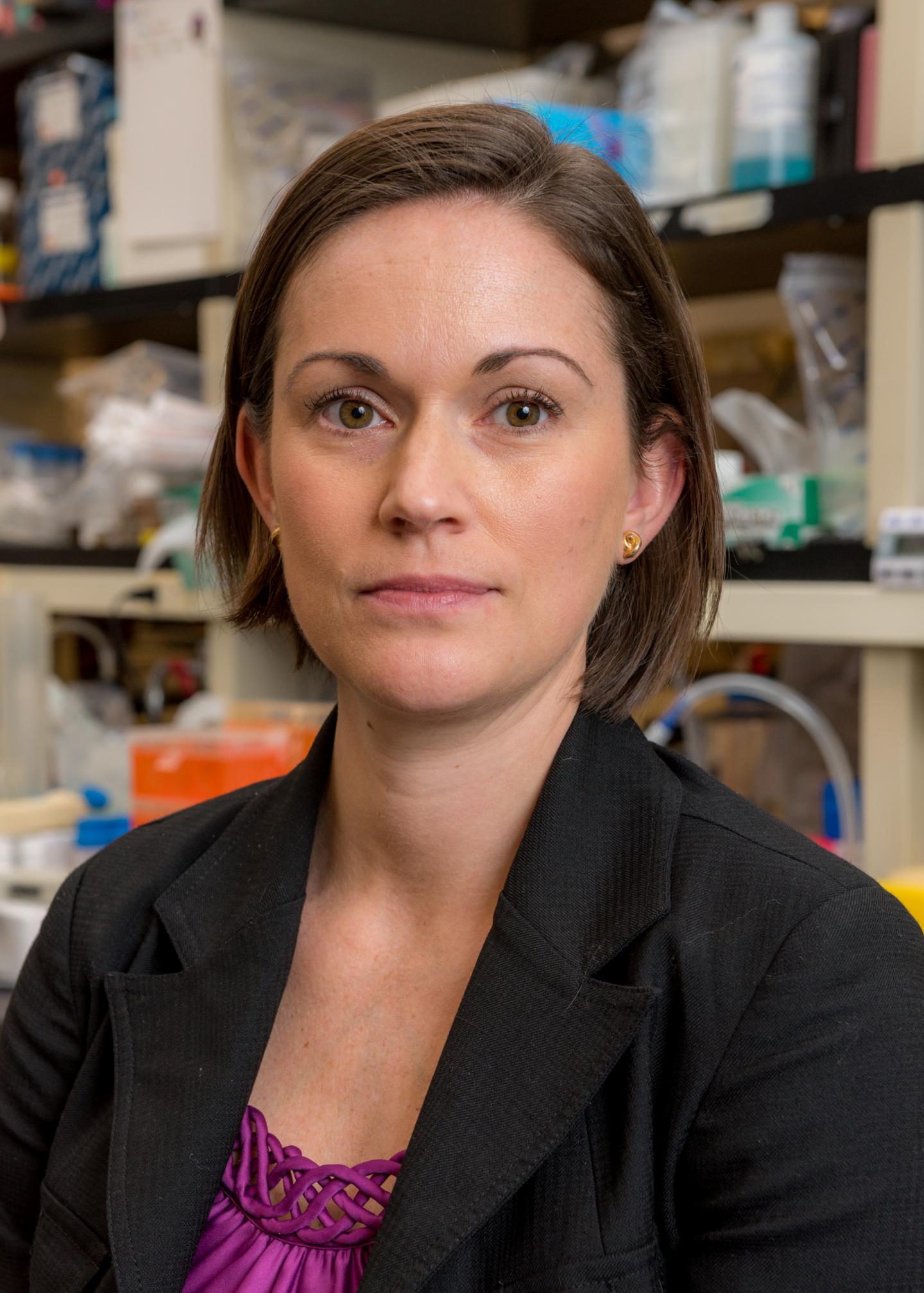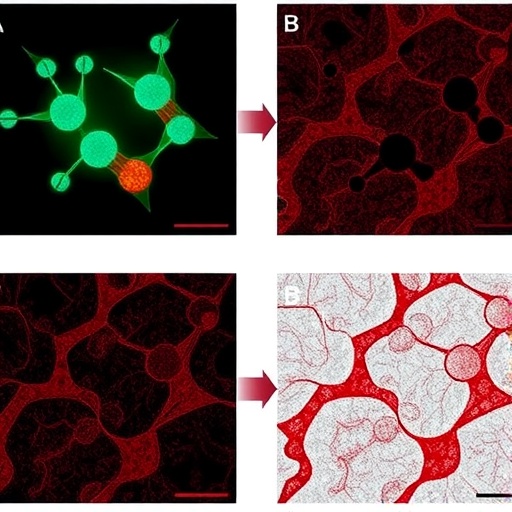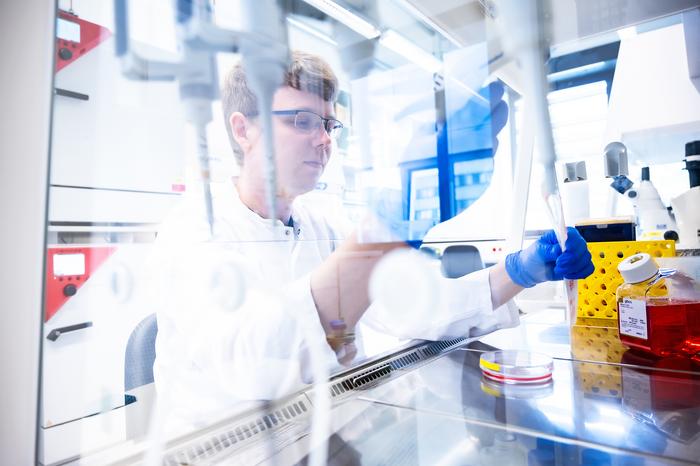
Credit: Dana-Farber Cancer Institute
BOSTON – For all the success of a new generation of immunotherapies for cancer, they often leave an entire branch of the immune system's disease-fighting forces untapped. Such therapies act on the adaptive immune system, the ranks of specialized cells that mount precision attacks on foreign and diseased cells. The other arm of the immune system, known as innate immunity, may not be merely idle during this battle, but may actually abet tumor growth.
In a new study in the journal Nature, Dana-Farber Cancer Institute scientists report that a compound able to reverse the allegiance of innate immune system cells – turning them from tumor enablers into tumor opponents – caused breast tumors in mice to shrink and withdraw from distant metastases. When combined with chemotherapy or another immunotherapy, the new compound significantly extended the period of tumor remission.
The findings suggest a way to bring the full repertoire of the immune system to bear on cancer in humans, the authors said.
"Most current forms of cancer immunotherapy influence the behavior of T cells – white blood cells that are part of the adaptive immune system – by 'teaching' them to attack tumor cells or removing impediments to such an attack," said the study's lead author Jennifer Guerriero, PhD, of Dana-Farber. "This strategy has been effective against several types of cancer, but generally only a subset of patients benefit. We wanted to see if harnessing both arms of the immune system could produce superior results."
The targets of the new study were innate immune system cells known as tumor-associated macrophages (TAMs). They're often found deeply embedded within tumors, but although they're part of the immune system – the body's defense against disease – they frequently promote tumor growth. In doing so, they're responding to cues issued by the tumor itself.
The roles that macrophages play – whether protective or destructive – depend on signals from their environment. In wound healing, for example, macrophages marshal the elements of the immune system that clear away damaged tissue and restore the affected area. Tumor macrophages manage to hijack some of these supportive functions for their own purposes. Not without reason is cancer sometimes referred to as a wound that doesn't heal.
In previous research, the Dana-Farber scientists and their colleagues showed that a compound known as TMP195 could convert TAMs from aiding tumor growth to organizing an attack on it. A selective, first-in-class, class IIa HDAC inhibitor, TMP195 switches the macrophage response by altering gene activity within TAMs.
In this current study, TMP195 sharply reduced the rate of tumor growth in mice with breast tumors, researchers found. They next combined TMP195 with various chemotherapy regimens and with a form of immunotherapy known as T-cell checkpoint blockade. In both cases, the combinations produced longer-lasting remissions of breast cancer than TMP195 alone did.
"Once they've undergone conversion, macrophages act as the orchestrators of the immune system attack on the tumor," said Anthony Letai, MD, PhD, of Dana-Farber, co-senior author of the study with Michael A. Nolan, PhD, of GlaxoSmithKline. "Our findings demonstrate that class IIa HDAC inhibitors can be an effective way of harnessing the anti-tumor potential of macrophages in cancer therapy.
"The future of cancer treatment is likely to involve combinations of therapies that act on both the innate and adaptive arms of the immune system, as well as therapies, such as chemotherapy, radiation therapy, or targeted therapy, that act on cancer cells themselves," he continued. "The ability to engage the innate immune system is an exciting new front in cancer therapy."
###
Co-authors of the study are Alaba Sotayo, Holly E. Ponichtera, PhD, Jessica A. Castrillon, MS, Alexandra L. Pourzia, Sara Schad, Shawn F. Johnson, and Suzan Lazo of Dana-Farber; Ruben D. Carrasco, MD, PhD, of Brigham and Women's Hospital; Roderick T. Bronson, DVM, of Harvard Medical School; and Scott P. Davis, MS, and Mercedes Lobera, PhD, of GlaxoSmithKline.
This work was supported by the National Institutes of Health (grants F32CA180733 and R01CA205967); the Friends of Dana-Farber; Dancing for a Cure; and a sponsored research agreement from GlaxoSmithKline.
About Dana-Farber Cancer Institute
From achieving the first remissions in childhood cancer with chemotherapy in 1948, to developing the very latest new therapies, Dana-Farber Cancer Institute is one of the world's leading centers of cancer research and treatment. It is the only center ranked in the top 4 of U.S. News and World Report's Best Hospitals for both adult and pediatric cancer care.
Dana-Farber sits at the center of a wide range of collaborative efforts to reduce the burden of cancer through scientific inquiry, clinical care, education, community engagement, and advocacy.
Dana-Farber/Brigham and Women's Cancer Center provides the latest in cancer care for adults; Dana-Farber/Boston Children's Cancer and Blood Disorders Center for children. The Dana-Farber/Harvard Cancer Center unites the cancer research efforts of five Harvard academic medical centers and two graduate schools, while Dana-Farber Community Cancer Care provides high quality cancer treatment in communities outside Boston's Longwood Medical Area.
Dana-Farber is dedicated to a unique 50/50 balance between cancer research and care, and much of the Institute's work is dedicated to translating the results of its discovery into new treatments for patients in Boston, and around the world.
Media Contact
Anne Doerr
[email protected]
617-632-5665
@DanaFarber
http://www.dfci.harvard.edu
############
Story Source: Materials provided by Scienmag






